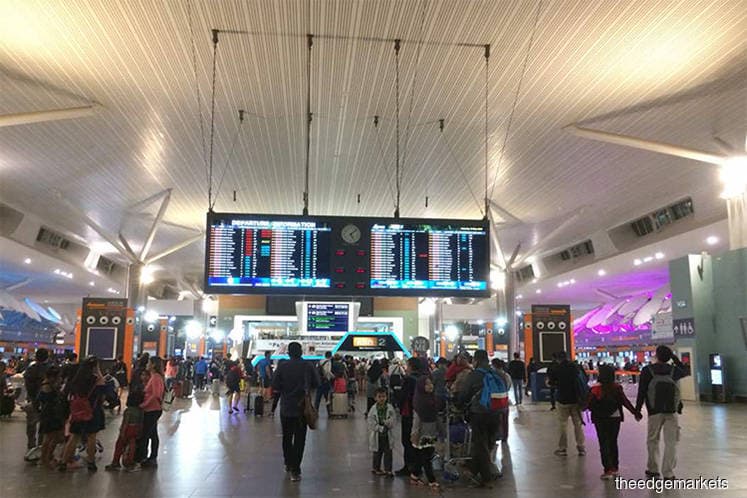
KUALA LUMPUR (Jan 24): Higher tourist numbers from India could serve to prop up arrivals into Malaysia Airports Holdings Bhd (MAHB)'s airports should there be no coronavirus outbreak in Malaysia.
In a note to investors this morning, MIDF Amanah Investment Bank Bhd Research said assuming there are no cases of the virus in Malaysia, Indian tourists — whose 15-day visa-free travel has been extended to the whole of 2020 — could offset a decline in Chinese tourist arrivals.
The research house noted tourist arrivals from India reached approximately 600,000, which is almost comparable to South Korea and 52.2% higher than Japanese tourist arrival numbers.
"Other growth factors would include direct connectivity seen from international airlines flights to locations such as Langkawi. As such, we still believe that MAHB passenger numbers can meet the 110.8 million mark in 2020 at the current juncture, assuming a growth rate of 5.4%. In terms of valuations, MAHB's stock price is trading at a 12-month price-to-earnings ratio (PER) of 24.6 times, less than half of its five-year average (PER) of 63.7 times and at a discount compared to the regional PER of 37.6 times," MIDF noted.
It added that MAHB's current valuation presents an opportunity for investors to take a position on any weakness given the turnaround in passenger numbers observed following past pandemics — three months after the peak of the Severe Acute Respiratory Syndrome (SARS) outbreak in 2003, when its share price rebounded 31%, MAHB's valuation rose.
MIDF has maintained its buy call on MAHB with a target price of RM8.98.
The research house noted that following the 2003 SARS outbreak, MAHB's passenger traffic growth in Malaysia slowed to 1.5% year-on-year (y-o-y) — with total international passengers at Kuala Lumpur International Airport (KLIA)'s main terminal travelling to and from China declining 10.7% y-o-y.
That being said, passenger traffic at MAHB's airports rebounded in 2004, rising 17.8% y-o-y — with international passengers from China at KLIA Main Terminal rising 75.8% y-o-y in the same year.
Based on its analysis of the SARS outbreak between November 2002 and July 2003, passenger traffic took an average of two to three months to normalise.
In Malaysia alone, April 2003 saw a 30.1% month-on-month (m-o-m) drop to 1.02 million passengers — the lowest point for that year. However, this changed in June as passenger movement increased by 18.1% m-o-m, and in July, it rose another 19.06% m-o-m to reach a normal level of 1.48 million passengers.
"As for China, May 2003 saw a 66.7% m-o-m decrease in passengers before advancing 50% m-o-m in June 2003 and another 166.7% m-o-m gain in July 2003. Given that this was nearly 20 years ago, we believe that technological advancements in the healthcare sector will likely contain the disease better," noted MIDF.
The World Health Organisation (WHO) had determined yesterday that the viral outbreak, which was first reported in Wuhan, China, is at this point not a global health emergency, following independent expert reviews and Chinese government measures to control the spread of the virus.
At 10.02am, MAHB shares rose 1.02% or 7 sen to RM6.93, valuing the airport operator at RM11.49 billion.